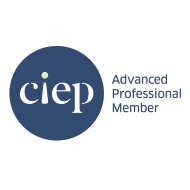What kind of editing do you need?
If you look online you will find many descriptions of the different levels of editing and proofreading and what they entail. And outside the publishing industry, many people talk about proofreading when they really mean some form of editing. This can be confusing, so on this page I’ve set out what I mean by the different terms I use. Of course, whatever we call it, I will always agree with you, and usually demonstrate on a sample, exactly what I will do, so you know what to expect.
Development editing (also called substantive or structural editing)
Here I will look at the big-picture issues of the text – plot, timeline, pacing, characterisation, dialogue, voice and point of view – to make sure that the story works as a whole.
At this stage I will not change the text, mainly because there’s no point tidying up the grammar and punctuation if the development edit finds major plot holes or areas that still need work.
You will receive a general report and a commentary in your text to help you re-work any areas that need improvement. You would then revise your manuscript to address any issues. Depending on how extensive these revisions are, we might do a second review, to check that any changes haven’t introduced new problems.
Once you are happy that it all works and hangs together, you will be ready for a copy-edit.
Copy-editing (sometimes also called line editing)
When copy-editing, I really get to grips with your text. I will ensure that everything is consistent (all British English spelling, for example) and make sure that spelling, grammar, punctuation and word choice are appropriate to your work and its audience. I will also look at repetition and word or phrase overuse, and make further suggestions to aid flow, clarity and style. Here in particular I will take my lead from you. There are often many ways of saying the same thing so I will not change something just because I prefer it that way, and you are always welcome to challenge my edits if you feel I have overstepped the mark.
You will receive two copies of your work from me: a ‘tracked’ version with my changes showing, and a ‘clean’ version where I have accepted those changes. I usually advise you to look first at the clean version so you can see how the edited text reads, and only refer to the tracked version if you want to see what I’ve changed. My explanations, questions and suggestions will be visible in both.
Copy-editing-plus
Of course, doing a development edit and then a copy-edit can end up quite expensive, so I also offer what I call a copy-edit-plus for those who just want reassurance that their plot and timeline are sound. Here my focus will be on the language issues, as in a regular copy-edit, but I will also look out for any plot, timing and continuity issues and suggest how to fix them.
You will get the same two versions of my edit as for copy-editing, but with more suggestions and, if necessary, an accompanying report.
Proofreading
Proofreading usually comes last in the production process, once the text has been copy-edited and formatted and just before it is published. It is usually best that this is not done by the person who copy-edited your work. Someone who has already worked on your text is likely to have become too familiar with it and may not spot any remaining errors. Because changes at this late stage can have expensive and time-consuming consequences, I will only correct errors of spelling, grammar and punctuation, not style or flow. Proofreading also looks at layout and checks page numbers and running heads.
When proofreading I will typically be working on a pdf of the ready-to-be-printed book and will mark up errors to be changed for you or your designer to implement.



